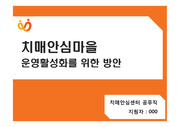High Temperature Creep Properties of Al-Al4C3-Al2O3 Alloy by Mechanical Alloying
(주)코리아스칼라
- 최초 등록일
- 2016.09.03
- 최종 저작일
- 2016.07
- 6페이지/
 어도비 PDF
어도비 PDF
- 가격 4,000원

* 본 문서는 배포용으로 복사 및 편집이 불가합니다.
서지정보
ㆍ발행기관 : 한국재료학회
ㆍ수록지정보 : 한국재료학회지 / 26권 / 7호
ㆍ저자명 : Chang-Suk Han, Han-Byeol Seo
목차
1. Introduction
2. Experimental Procedure
2.1 Specimens
2.2 Creep test and tensile test
3. Results
4. Discussion
5. Conclusions
Acknowledgements
References
영어 초록
Tensile tests and creep tests were carried out at high temperatures on an Al-Al4C3 alloy prepared by mechanical alloying technique. The material contains about 2.0 % carbon and 0.9 % oxygen in mass percent, and the volume fractions of Al4C3 and Al2O3 particles are estimated at 7.4 and 1.4 %, respectively, from the chemical composition. Minimum creep rate decreased steeply near two critical stresses, σcl (the lower critical stress) and σcu (the upper critical stress), with decreasing applied stress at temperatures below 723 K. Instantaneous plastic strain was observed in creep tests above a critical stress, σci, at each test temperature. σcu and σci were fairly close to the 0.2% proof stress obtained by tensile tests at each test temperature. It is thought that σcl and σcu correspond to the microscopic yield stress and the macroscopic yield stress, respectively. The lower critical stress corresponds to the local yield stress needed for dislocations to move in the soft region within subgrains. The creep strain in the low stress range below 723 K arises mainly from the local deformation of the soft region. The upper critical stress is equivalent to the macroscopic yield stress necessary for dislocations within subgrains or in subboundaries; this stress can extensively move beyond subboundaries under a stress above the critical point to yield a macroscopic deformation. At higher temperatures above 773 K, the influence of the diffusional creep increases and the stress exponent of the creep rate decreases.
참고 자료
없음
"한국재료학회지"의 다른 논문
더보기 (2/7)




